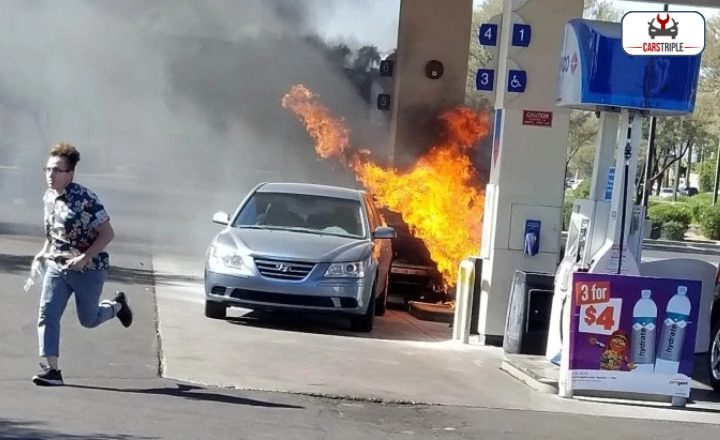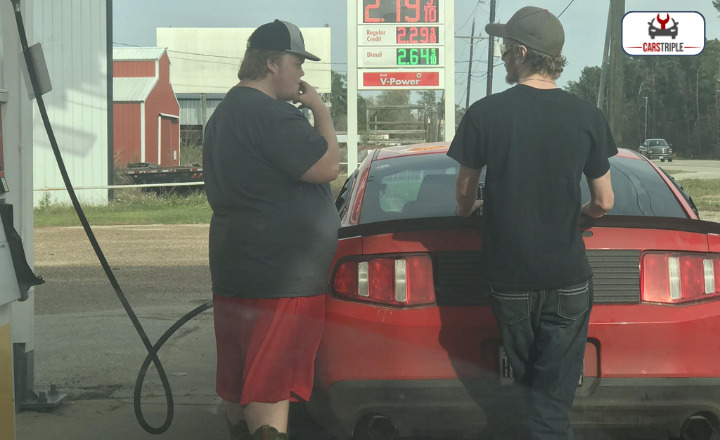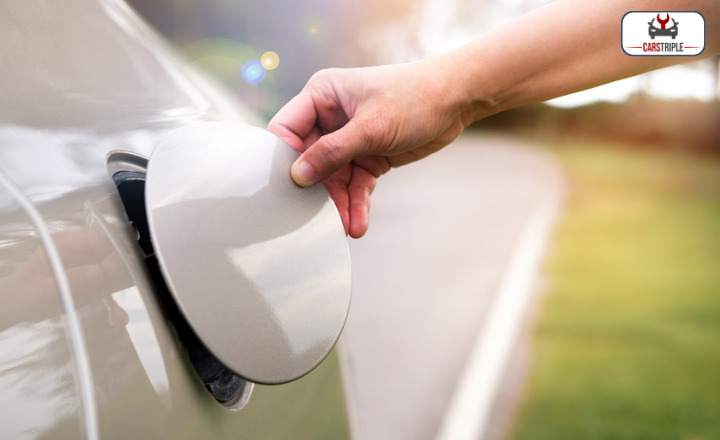Some argue that running can you pump gas with the car on the engine is safe and convenient, while others believe it poses potential risks whether pumping gas with the car on is a harmless convenience or something best avoided altogether.
Provide information about mythbusters pumping gas while car is running. Whether you’re curious about fuel efficiency or safety concerns or if you can multitask while refueling your vehicle, read on to discover.
Can You Pump Gas With The Car On?
The primary reason behind this recommendation is safety. Fueling stations are filled with flammable substances, and any spark or ignition source can potentially lead to a dangerous fire.
Some argue that leaving the engine on while pumping gas can increase the risk of fires and explosions. The logic behind this concern is that gasoline vapors are highly flammable and can easily ignite when exposed to sparks or flames.
Modern vehicles have electronic systems that could cause a spark if an electrical malfunction occurs. As such, they argue that turning off the engine reduces these risks and ensures safety at the pump.
Why Is Pumping Gas With The Car Dangerous?
Pumping gas seems like a routine task that requires minimal attention, but it can pose serious risks if proper precautions are not taken. One of the main dangers of pumping gas with the car still running is the potential for ignition.
When fuel is pumped into the tank, there is always a slight risk of gasoline vapour escaping and coming into contact with an open flame or spark. The heat generated by the engine or even static electricity could ignite this volatile mixture, resulting in a potentially catastrophic fire or explosion.

Another reason why pumping gas with the car running is dangerous relates to static electricity buildup. As you move in and out of your vehicle while refuelling, friction can cause an accumulation of static charges on your body and clothing.
Notes when performing a fuel pump for your car
Performing a fuel pump replacement for your car may seem daunting, but it can be accomplished with careful preparation and attention to detail.
Turn off electronic devices.
Turning off electronic devices eliminates any risk of sparks or electrical disturbances while working on the fuel system. Fuel pumps are typically located near the gas tank, where flammable vapours may be present. Even a tiny spark from an active device could ignite these vapours, resulting in a dangerous situation.
Powering down all electronic devices before beginning the replacement significantly minimizes this risk and safeguards you against potential harm. Disconnecting electronic devices helps prevent interference with sensitive car systems during the fuel pump replacement.
No smoking at gas stations
One crucial rule that should always be noticed is the prohibition of smoking at gas stations. Lighting up a cigarette near highly flammable gasoline can lead to disastrous consequences.
The risk of igniting the fuel vapors is incredibly high, as even the slightest spark could trigger a catastrophic fire or explosion. Gasoline is a highly volatile substance that easily converts into vapour form.

These invisible vapors can quickly accumulate and spread around the filling area, especially when refuelling vehicles. A lit cigarette or any other open flame acts as an ignition source that can cause these vapors to ignite instantly, endangering everyone nearby.
Sitting in the car or getting off?
Sitting in the car while refueling can be convenient, especially during cold or rainy weather. With modern technology like pay-at-the-pump systems, staying inside allows you to remain warm and dry without having to brave the elements.
Some individuals may have physical limitations that make it difficult to get out of the car quickly. Sitting in the car limits your ability to inspect for any leaks or damages that could occur during pumping.
Fill the tank based on its capacity.
It may become necessary to replace the fuel pump to maintain optimal performance. Before delving into the process, it’s essential to understand how much fuel your tank can hold.
Different vehicles have varying tank capacities, ranging from 10 gallons for compact cars to 30 gallons for larger SUVs or trucks. Knowing your car’s capacity will allow you to accurately estimate how much fuel you need to fill it, avoid overfilling or running out, and use the best quality gas.
Do not touch the gasoline.
One of the most crucial is ensuring you do not touch the gasoline during the process. Fuel pumps are responsible for delivering fuel from the gas tank to the engine, and any contact with gasoline can pose serious safety risks.
Watch your kids
Extra precautions must be taken if you have young children around while working on your car. It is crucial to keep a watchful eye on your kids and ensure their safety throughout the procedure.
Check the fuel and oil tank cap before leaving the gas station
While this may seem minor, neglecting to ensure that both caps are securely tightened can lead to potential dangers and expensive repairs. Taking just a few seconds to double-check these caps can save you from inconveniences.

Inspecting the fuel tank cap is vital as it prevents gasoline evaporation, which can result in reduced fuel efficiency over time. A loose or missing cap allows vapors to escape, causing your engine control system to work harder than necessary.
Mythbusters Pumping Gas While Car Is Running
The most common misconception surrounding pumping gas while the car runs revolves around the fear of igniting fuel vapors. The belief is that any sparks during refueling could trigger an explosion due to flammable gasoline fumes.
Experts argue that modern vehicles have numerous safety features like sealed fuel and vapor recovery systems, reducing the likelihood of such accidents.
Conclusion
In the above content, we discussed how can you pump gas with the car on. Pushing gas with the car on is not recommended due to the potential risks and dangers. Gasoline is highly flammable; any spark or ignition source can lead to a catastrophic fire or explosion.
Keeping the engine running while refueling can increase the risk of static electricity buildup, which could also ignite gasoline fumes. It is crucial to permanently turn off the engine before starting the gas pumping process. By following this simple safety measure, we can ensure our well-being and protect others from potential accidents.
FAQ’s
Can you pump diesel with the car on?
It is highly recommended to turn off the engine before refueling with diesel. This is because diesel fuel is highly flammable and can ignite quickly, especially when exposed to sparks or flames.
Does petrol and diesel mix?
Petrol and diesel are different fuels with distinct chemical compositions and properties. Petrol is a lighter fuel that evaporates quickly and is commonly used in spark-ignition engines. Diesel is a heavier fuel that does not evaporate as quickly and is used in compression-ignition engines.
